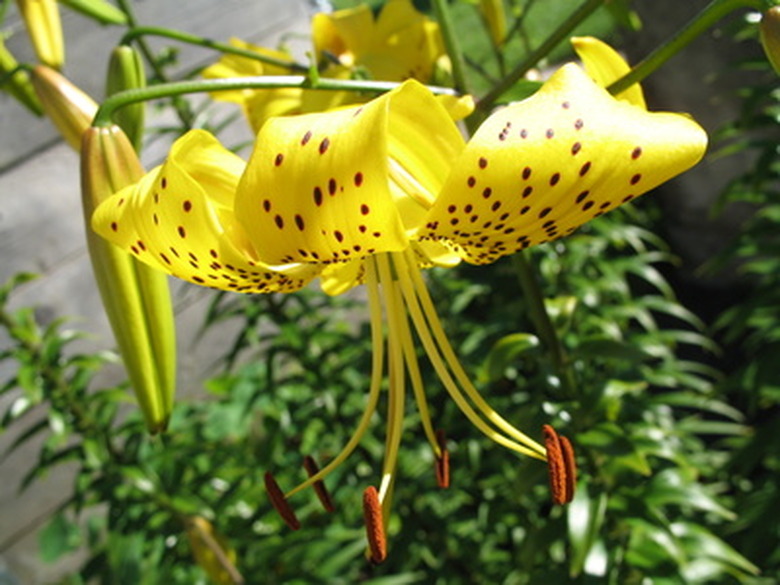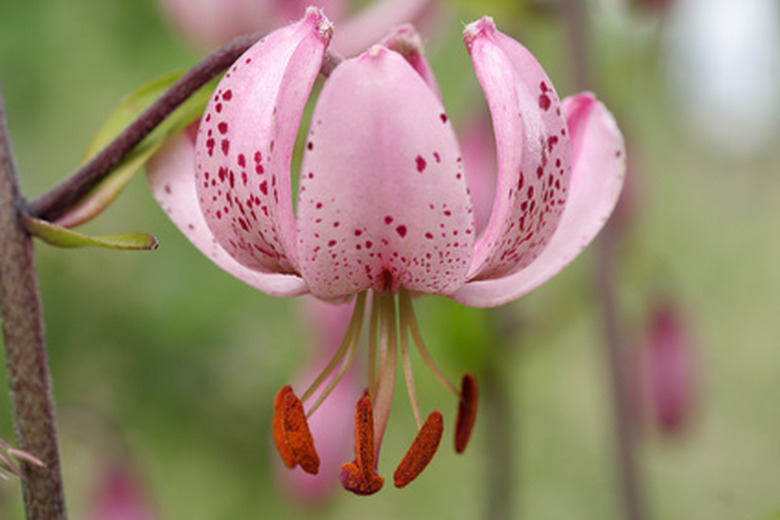Deer Resistant Tiger Lily
Anyone who has ever walked into a dew-fresh garden with a cup of morning coffee only to discover that white-tailed deer have made salad with prized hostas knows how frustrating living with deer can be. Perennial gardeners who live in areas with a lot of deer learn to interplant attractive plants with plants that deer avoid. Tiger lilies make a lovely choice for deer-resistant plantings.
Considerations
Most deer damage occurs during winter when food is scarce. Increasingly, though, human population shifts to rural areas, elimination of predators and growing controls of hunting have forced deer populations to forage in areas inhabited by humans. Barriers, noise and repellents have limited success against starving deer.
Identification
Lilium lancifolium, commonly called tiger lilies, are native to China but are ancient adaptees to the United States. They are perennial bulbs that grow to 6 feet tall and bloom in midsummer. Formerly named L. tigrinum, their scentless flowers are reddish orange to yellow pendant 3- to 5-inch recurved blooms. Their petals are covered with purplish-brown spots. The plants are sterile and reproduce by numerous bulbils that grow along their stems.
- Anyone who has ever walked into a dew-fresh garden with a cup of morning coffee only to discover that white-tailed deer have made salad with prized hostas knows how frustrating living with deer can be.
- Barriers, noise and repellents have limited success against starving deer.
Native Advantage
Native or adapted plants like tiger lilies have advantages that many garden plants lack when it comes to resisting deer. According to Cornell University's extension service, deer will choose fertilized plants over unfertilized plants and plants that are irrigated or watered over those that are not. Tiger lilies and other plants that grow in the wild without cultural aids are less attractive to deer.
Geography
In addition to its native China and Taiwan, Harvard's eFlora project charts the tiger lily's naturalized range in North America from New England south to Virginia and west to the Mississippi. The U.S. Department of Agriculture's Plant Database adds Eastern Canada, North Carolina, Alabama, Louisiana, North Dakota and Montana to this range. In these areas, the plant would be most deer-resistant because it has naturalized and requires no cultural aid.
Misconceptions
Several other plants are called tiger lilies. Tawny daylilies (Hemerocallis fulva) are actually deer favorites but may be mistaken for tiger lilies. Other recurved lilies like the martagons are often mistaken for tiger lilies; they require fertilizer and irrigation in most of their range, making them more likely candidates for grazing. Only L. lancifolium is the reliably deer-resistant tiger lily.
- Native or adapted plants like tiger lilies have advantages that many garden plants lack when it comes to resisting deer.
- Other recurved lilies like the martagons are often mistaken for tiger lilies; they require fertilizer and irrigation in most of their range, making them more likely candidates for grazing.




